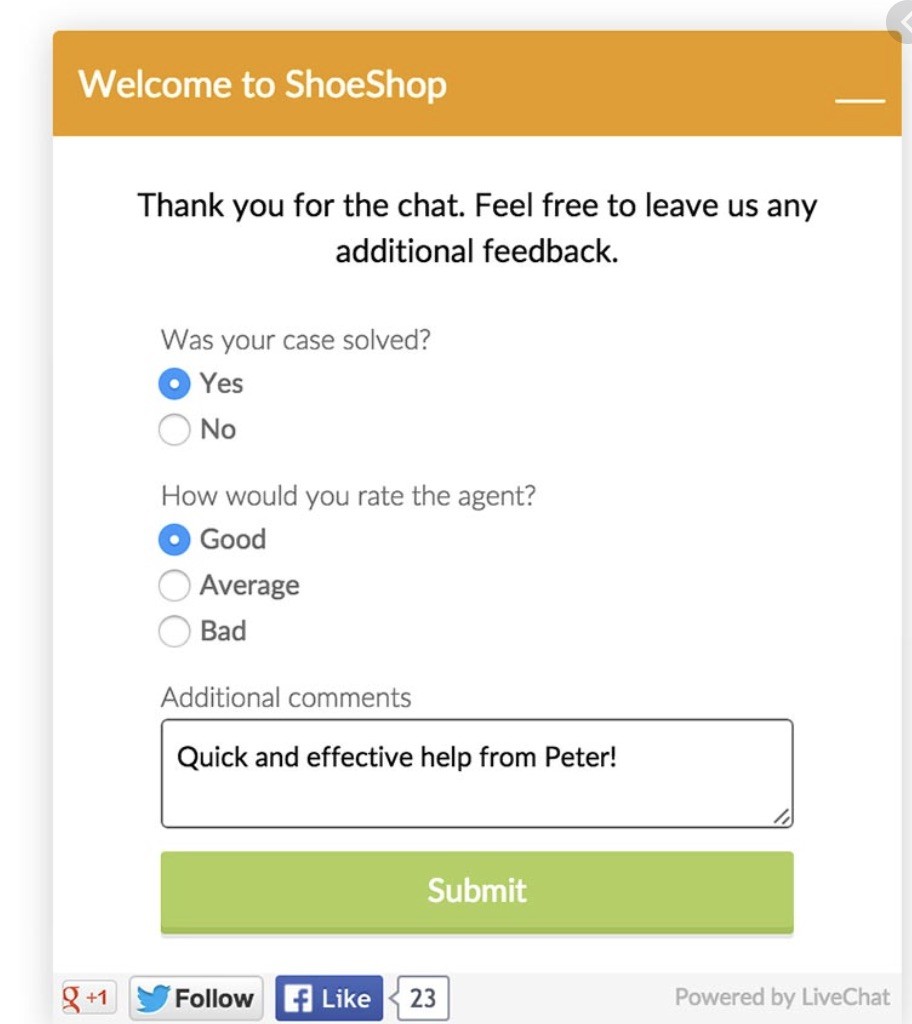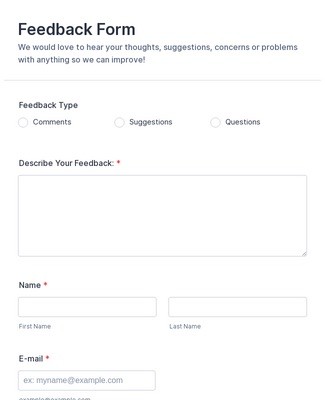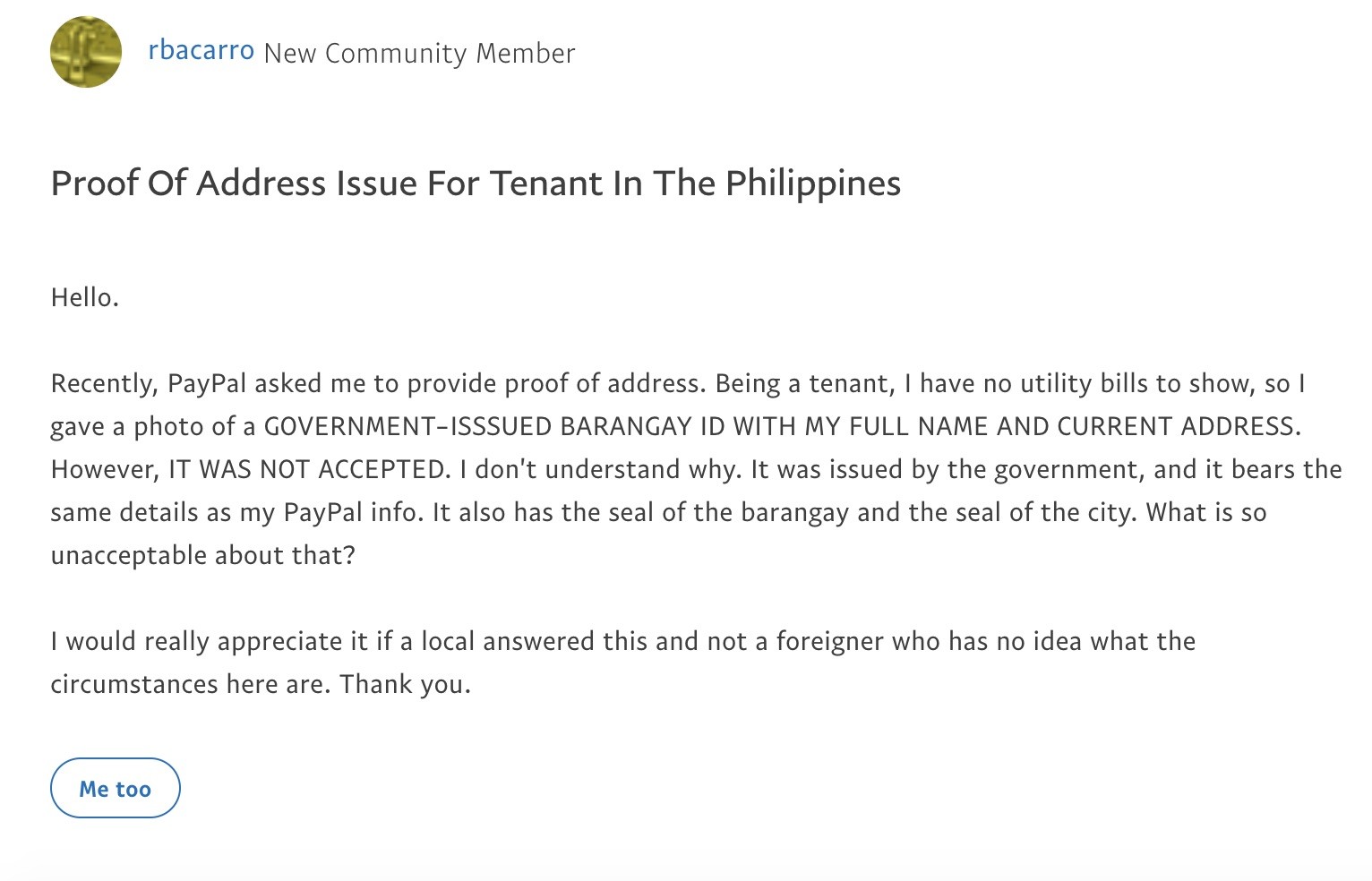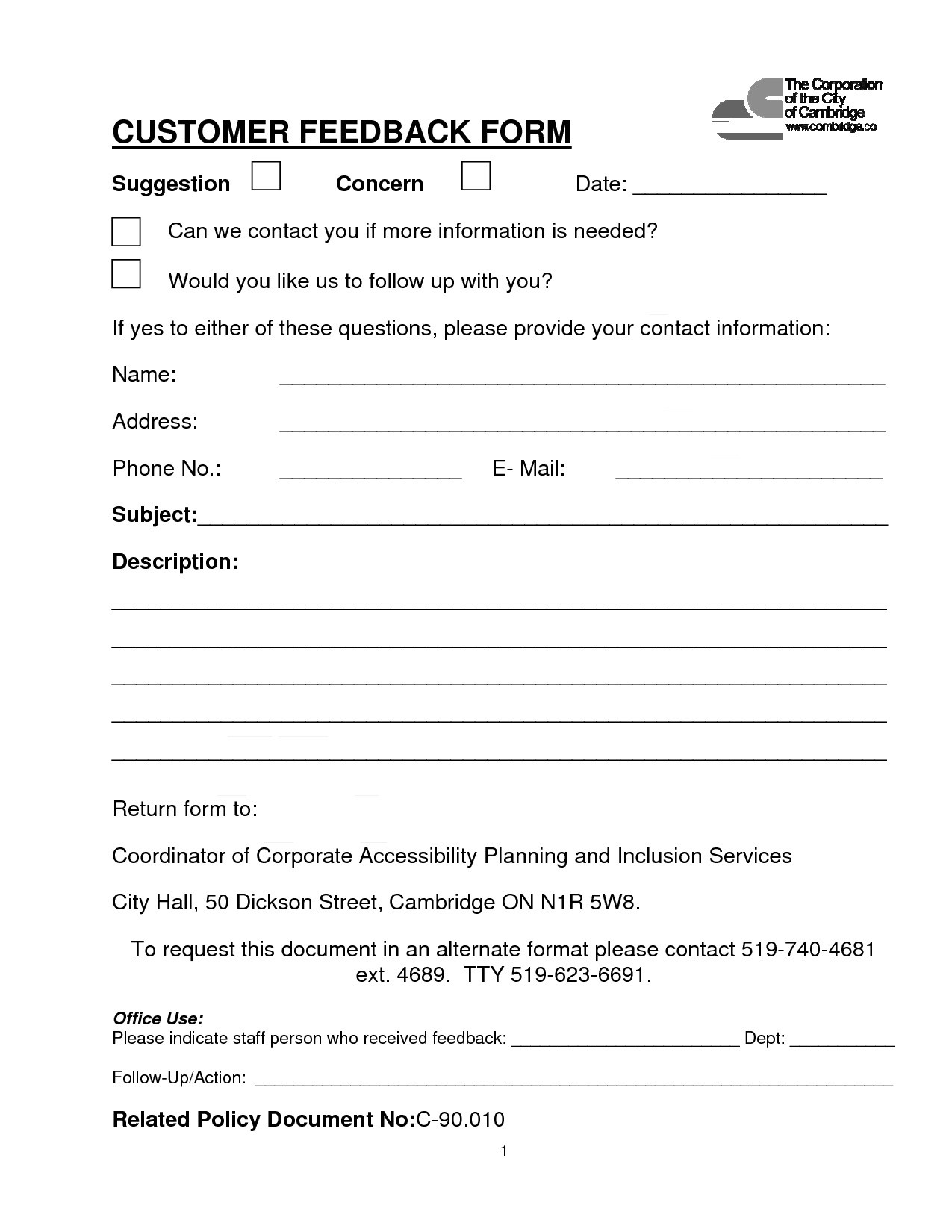It is important to analyze your business from every perspective. A reliable way to know how you’re doing is to gather your customers’ feedback. After all, you are only as good as what your customers say.
In this article, we’ll explain what customer feedback means, its importance, and also describe ways to obtain it.
What is Customer Feedback?
Wikipedia defines customer feedback as “a review of a product or service made by a customer who has purchased and used, or had experience with, the product or service”
However, it does not have to be in the form of a detailed review. Customer feedback is a customer experience which can be expressed” in the form of a single comment or action.
Why Is It Important?
It doesn’t matter what kind of a business you run, you will need your customers’ feedback to understand how you’re doing or what your buyers think of your product or service.
Feedback is not the same as research. Research helps understand the market, feedback helps you understand your product or service.
By asking for feedback, you give your customers a chance to share what they’d like you to do. There are many benefits of doing so:
#1 Helps Improve Services and Products
Most businesses study the market and their target audience when they launch a new product or service. Everything is based on market research but things may not always turn out as expected.
Think of Coca Cola. The company tried to introduce something new to the American audience under the name of ‘New Coke’ but the product received negative feedback and turned out to be a major failure.
This feedback helped the company realize what customers wanted and it started to concentrate on flavors that were in demand.
Coca Cola has launched several successful products since then, all thanks to feedback that has helped it understand audience taste and requirements.
#2 Important to Measure Satisfaction
You’ll never find out what your customers think of your product or service unless you have real feedback.
Customer loyalty and satisfaction are necessary to stay competitive in business. Increased customer loyalty results in higher revenue, bigger market share, and lower costs.
There’s a direct connection between business performance and customer satisfaction. Companies that fail to satisfy customers find it difficult to stay afloat. Hence, it’s necessary to ensure your clients are satisfied with what you offer.
The best way to know what they think is to ask for their opinion. You can use a number of techniques to measure the level of satisfaction, including surveys for money. We’ll explain these later in this article.
#3 Makes Customers Feel Special
Customers want to buy from companies that care for them. An easy way to make buyers feel valued is to ask for their opinion and tell them that it matters to you.
You can even post their feedback on social media and tag them. A small shout out can be of great help as seen here:

Customers enjoy answering questions about their experiences.
You only need to know how to ask for feedback from customers. But you have to be careful when asking for it. Do not force them to share their opinion and don’t try to convince them to be ‘good’. You should instead try to get them to be honest so that you can understand what they really think of your business.
#4 Helps Retain Customers
This one is a no-brainer. Satisfied customers are more loyal, hence easier to retain. On the other hand, unhappy customers will not think twice before leaving you and finding an alternative.
Not asking for feedback or reacting positively to feedback is one of the major reasons why buyers leave brands. If you want customers to stay with your company for a long period of time then pay attention to what they have to say.
Asking for feedback will allow you to handle grievances in a proper manner and retain more clients. By listening to what our customers are saying, we are able to provide better and more tailored solutions for their unique needs. Numberforliveperson believes in engaging with our customers at every step of the way, and truly believe that this is the key to providing world-class customer service.
#5 Feedback Can Help You Find More Buyers
This might come as a surprise to some but a lot of people on the internet look for customer feedback or testimonials to know how reliable a brand is. If they don’t find any, or find but the feedbacks are poor, they will hastily look somewhere else.
They’ll think of you as unprofessional. This is why it is important to encourage buyers to leave feedback.

Sadly, most buyers leave no feedback. Also, we’re more inclined to leave feedback after a negative experience than we are to after a positive experience. This is why businesses need to improve the overall customer journey and encourage feedback.
#6 Customer Feedback Can Help Inform Other Buyers
Things have changed. Very few consumers today trust commercials. They know that a large number of features or benefits advertised in commercials are fake or exaggerated. They prefer to turn to real sources such as customer feedback for information regarding a product and service.
Feedback can be in the form of a review, rating, etc. As a business, you should encourage people to write informative reviews or provide detailed feedback that you can use to attract more buyers.
Remember that only one out of 26 unhappy buyers share their feedback and the rest move on. Think of businesses like Airbnb and Booking.com. Most users who land on these sites look at ratings and comments others have left to decide if a hotel is worth staying at or not.
#7 Feedback Helps Make Business Decisions
Every business decision – big or small – must be made with a lot of care. One mistake can cause you to lose clients and face heavy losses.
Businesses gather a variety of data to make the right call. This includes data from suppliers, competitors, and customers. You will not be able to make the right decision if any of these is missing.
Customer feedback is very important to make the right decision because it tells if you should continue doing what you’re doing or change things.
How to Get Feedback from Your Customers:
Customers are willing to share feedback but only to businesses that make them feel important and use the right feedback survey technique.
There are several ways to get feedback from clients but not all might be suitable for you. Below we have highlighted ten reliable ways to collect client feedback.
1. Offer Live Chat Support
Live chat does not only help increase conversion and keep people coming back, it also encourages buyers to share feedback.
Most visitors use the live chat feature to get answers to their questions, seek help, or share grievances. The data or information that they share is considered ‘feedback’ as it often contains valuable opinions that you can use to improve your products or services.
Chat support helps businesses quickly solve problems. However, you must use a chat tool that allows you to save transcripts that can be examined for feedback. Also, to enjoy the benefits of this feature, make sure to offer excellent chat support.
Whether you use a chat bot or a live agent, your customer must feel satisfied. Customers who have to wait for hours to get in touch with an agent or who do not find the agents informative may decide against sharing feedback so make sure to work on these aspects.
2. Offer Email and Phone Support
In addition to live chat, you can use email and phone support to gather customer feedback. The concept is pretty similar, get customers to reach you to share what they feel about your business.
While live chat is the most popular option, we can’t deny the fact that some users still prefer email and phone support by the way it can be executive with the help of an enterprise phone system. About 29 percent of internet users like email as it allows them to write detailed messages and even include photos.
Everything a customer says is ‘feedback’, which you should gather and use intelligently.
3. Ask for Feedback after a Session
Ask for comments once a user ends a support session as seen here:

This section can help you understand how your customer support department is doing and if you need to shuffle things. Plus, it can be a great way to increase leads.
Not every customer will be satisfied after speaking to an agent, which can be a problem because unsatisfied customers are more likely to leave negative comments.
Once you know someone’s still satisfied, you can go the extra mile to get in touch with the person and try to satisfy them. This can help keep more customers while reducing the risk of getting maligned.
You can also leave a feedback option on phone and email support. Consider using a simple rating scale as seen here to make it easier for readers or users to leave feedback:

Avoid asking for long or detailed feedback as customers don’t like to waste time.
4. Place Customer Feedback Forms on Different Pages
You can do two things – place a feedback form as seen here:

The feedback form or page can also be used to gather comments. In addition to this, you can place a dedicated email to help people get in touch.
Make sure the email is neatly visible so that users do not miss it.
5. Pay Attention to Social Media
Social media can be a great tool to gather feedback without asking for it.
For example, if you sell clothes then the number of likes a specific design can help you figure out how popular it is.
Some social media platforms like Facebook even allow customers to write detailed reviews that can help you understand what buyers think of you. Be careful, however, as potential clients may look at these reviews to gauge how reliable you are.
Be quick to respond to comments, DMs, and requests and encourage engagement. Additionally, consider asking questions if you wish to receive feedback on a specific topic.
6. Call Your Customers
Calling customers can be a great way to receive feedback. It offers personalized comments. However, you have to be careful when you call someone.
According to reports, 8 to 9am and 4 to 5pm are the best times to call to qualify a lead. The worst time is during lunch hours. People like to eat in peace and they do not enjoy answering calls, especially calls that do not directly benefit them.
Also, you have to create a solid script. You should sound genuinely concerned. Avoid making marketing offers, the only purpose of the call should be to gather feedback while making the recipient feel you care for their opinion.
While highly efficient, this method can be quite effort-intensive, and should be reserved for long-term or high-potential clients.
7. Get Your Product Tested
Product testing can be a great way to generate valuable feedback. Almost all kinds of businesses use this technique to gather feedback, especially when they wish to introduce a new product to the market.
The trick involves creating a sample group, consisting of your target audience, and asking them to use your product and provide genuine feedback.
Survey websites like OneOpinion and YouGov can be used for this purpose. They typically charge between $10 and $30 per survey and can help you get feedback from ‘real’ customers.
In some cases, you might be able to see consumers use your goods and understand what kind of questions or challenges they have to face while doing so. This information can be used to improve what you have to offer.
8. Look at the Numbers
Tools like Google Analytics and Adoric can be used to understand what visitors think of your site, products, or services.
Pay attention to stats like bounce rate, the number of visitors, etc., to understand what customers are interested in and if you need to make changes to your site.
A high bounce rate might indicate bad design and other such issues. We covered some great bounce rate-related tips in our How to Decrease Website Bounce Rate: 12 Tips That Work.
9. Use Polls
Polls are fun and effective. Plus, they can be placed everywhere from your website to marketing emails and social media stories. Big companies like BBC and WWE use polls to understand what customers want.

Polls can be used to identify trends and preferences.
10. Create an Online Community
PayPal uses this technique very effectively. It has created a community where customers can make posts and discuss issues.

Moderators and other users can respond to queries. This does not only help solve problems but also offers a good way to gather customer feedback.
Agents can go through the pages and see what kind of problems customers face. This feedback can be used to improve products and provide better customer support.
Collecting Customer Feedback: 5 Tips to Remember
Now that we have covered some reliable ways to collect feedback, let’s have a look at some tips on how you can make these methods more efficient.
#1 Keep Your Surveys Short
A survey should take only a few seconds to complete. Customers are usually in a hurry, they do not have the time to waste answering questions that offer no immediate benefits to them.
Make things easy by giving customers option to choose from as seen here:

The above form is very easy to fill. Customers will not have to think a lot to complete it. On the other hand, the form below can be very lengthy and time-consuming to fill.

We understand that at times it is mandatory to have a long survey form. If such is the case, then it is best to hire the services of a third-party site like JotForm Survey Maker or SurveyMonkey as they house users interested in long surveys.
This can be an expensive option but it’s worth a try.
#2 Avoid Asking for Personal Information
Customers do not like to provide personal information such as phone number or address, especially if they’re new to your site. Hence, avoid asking for such information.
Only request information that you need. For most cases, the email address and name will be enough. If you need more information, you can use it in stages.
For example, ask for the name and email during the subscription stage, request the phone number when you send the first email, and so on.
#3 Make Sure to Use the Information
There is no point in collecting feedback if you do not intend to use it.
A lot of companies use customer feedback tools but they don’t know what to do with the information gathered.
It can be quite overwhelming to deal with all the positive and negative comments. Still, you must come up with a strategy to deal with it.
There are three things you can do:
- Differentiate between constructive and non-constructive feedback
- Respond to questions and opinions in a proper manner
- Share the information with others including internal staff and potential customers
The most important thing is to make your users feel their comments are valued. This can be done by sharing it with others through your social media pages and implementing the requested changes.

The above example shows how the university paid attention to student feedback and made the changes. They also highlighted it to let students know their opinion matters.
Such steps can be effective in increasing loyalty and building customer confidence.
#4 Not Every Comment Matters
As mentioned earlier, it is important to differentiate between constructive and non-constructive feedback.
Some feedback forms are not useful either due to missing or incorrect information. Plus, some comments can be biased due to a bad experience. Do not let such results affect your understanding of a product or business.
You can use customer feedback tools that can compare results and find outliers.
#5 Offer Something in Return
Consider offering rewards to customers for providing feedback as seen below:

This can be very helpful as it pushes more users to share feedback, even if it is time consuming.
You can offer discount codes via email, which will not only give you a new email to add to your list but also a great opportunity to have the buyer come back.
Conclusion
Now that you know how to ask your client for feedback, we hope you will have no difficulty in collecting customer feedback.
Remember that the primary reason to collect customer feedback is to improve what you offer and make customers feel valued and special.
You will never be able to satisfy all your customers unless you go the extra mile to collect customer feedback and use it in the right manner.
About 77 percent of users view brands more favorably if they collect and apply customer feedback. Big companies can see an increase of $700 million in revenue within three years of investing in customer experience.



